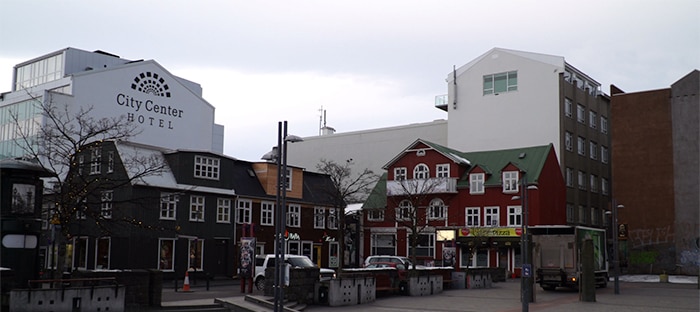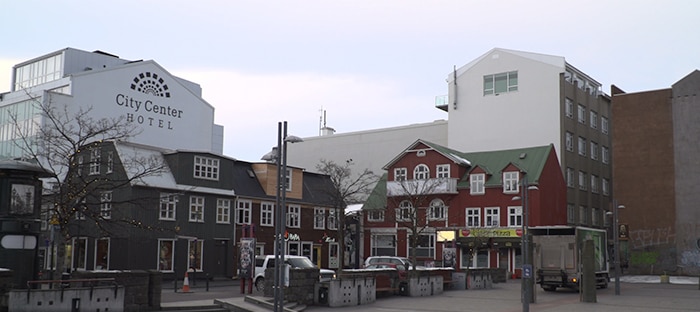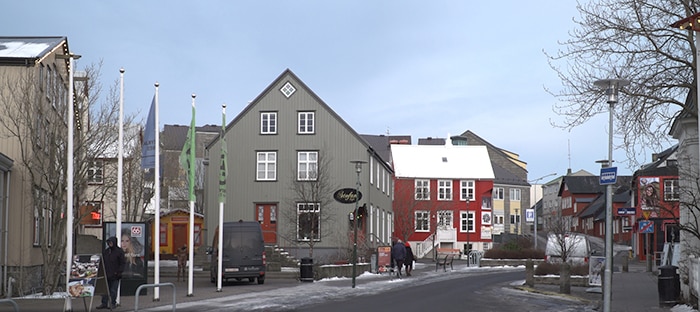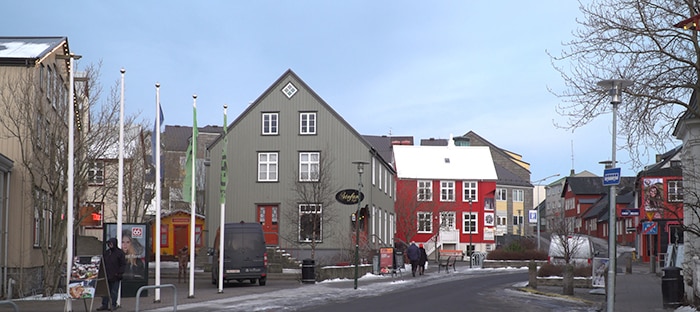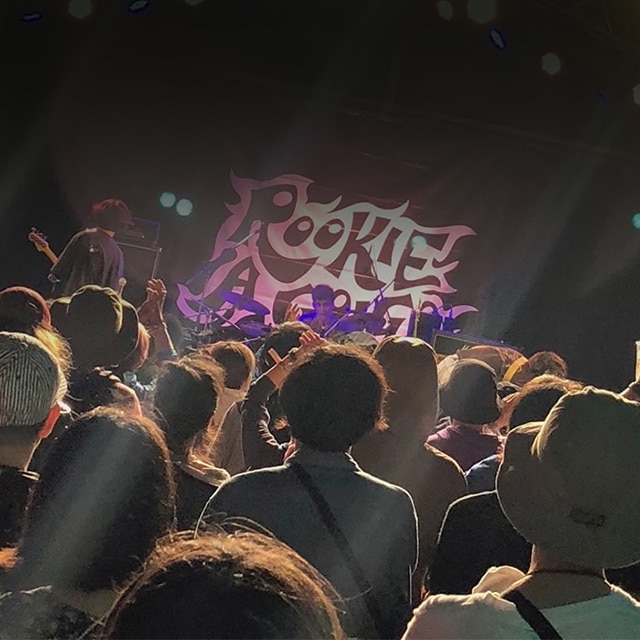FS5 shooting tips
Part one of Alister Chapman’s expert camcorder advice on getting the best image quality from Sony’s PXW-FS5.
The PXW-FS5 produces a very high quality image with standard factory settings, but also offers many things that you can do to adjust the image quality to suit your own personal needs or to create different looks. The FS5 can also shoot using S-Log2 and S-Log3 for a film style workflow where the object is to capture the best possible ‘digital negative’ that can be taken into post production and adjusted, color corrected or graded to produce a huge range of different stylized looks.
Picture Profiles
The FS5 comes with 9 pre-programed Picture Profiles. These are memories built into the camcorder and each one gives a slightly different look to the standard settings. You can use the Picture Profiles as they are or you can go into each profile and adjust and fine tune the settings to suit your needs. Picture Profiles 1 to 6 are all setup for standard “what you see is what you get” style shooting where the image you see in the viewfinder is the image that the end viewer will see. Picture Profiles 7, 8 and 9 are set up for shooting using Sony’s log gammas – S-Log2, S-Log3 and RAW – where an important part of the workflow is the adjustment or color grading of the footage on a computer. To try to keep things easier to understand, I’m first going to take a look at Picture Profiles 1 to 6. The second half of this document will cover shooting with S-Log2 and S-Log3 with Picture Profiles 7, 8 and 9. Using Picture Profiles is very simple: all you have to do is press the Picture Profile button on the side of the camera and then use the scroll wheel or hand grip joystick to step through the profiles to choose the one you want to use.
NOTE: If you change any of the settings within any of the Picture Profiles, you can return them to their original factory settings by opening the Picture Profile settings and using the reset option. This will reset that Profile back to the factory default settings. When adjusting the FS5’s setting, it’s important to understand the best possible images will almost always come from using the FS5 at its native sensitivity. The native sensitivity is easily set by setting the cameras Gain/ISO selection (in the camera menu) to Gain and to set the Gain to 0dB. This will ensure the camera is always at its optimum sensitivity for any gamma curve selected. If you choose to use ISO instead of Gain please be careful as different gamma curves have different brightness and contrast ranges. As a result, the ISO that represents the cameras native sensitivity varies depending on the gamma curve chosen. Please see the table below to understand which ISO to use for the lowest noise and highest dynamic range with each gamma curve. To avoid confusion, I recommend the use of Gain rather than ISO.
Let’s look at what each Profile offers as standard.
Picture Profile 1 is a mirror of the camcorder’s standard settings.
Picture Profile 2 gives a look that mimics the pictures you would get from a typical DSLR camera. The pictures are high-contrast with deep, dark shadows and vibrant rich colors. This profile can work well for music videos, festivals and events and anything else you want to look vibrant and colorful.
Picture Profile 3 uses the ITU709 gamma curve along with the Pro color mode. ITU709 is the standard gamma curve for HD television. As a result, this combination gives natural contrast with good natural colors that can be graded and tweaked in post-production if needed.
Picture Profile 4 uses ITU709 gamma combined with the 709 color mode. The end result is very similar to the standard setting, but the colors are just a little bit more saturated.
Picture Profile 5 uses one of the 4 Cinegammas available in the FS5. The Cinegamma gamma curves give an improved dynamic range that helps the camera to cope in difficult lighting conditions. The have an improved, film-like highlight roll-off, so over-exposure and very bright scenes will often look better. The colors are slightly subdued (less saturated), again to mimic film and give a film-like look. Profile 5 works very well for bright sunny exteriors or any scene with bright highlights. It’s also great when you want a more filmic, slightly lower-contrast look straight from the camera. NOTE: To get the very best from the Cinegammas, they should be exposed a little darker than you would expose normal gamma curves. If needed, small adjustments to the brightness can be made in post-production. With conventional gamma curves, it’s common to expose faces and skin tones at around 70%. For the Cinegammas, I recommend exposing faces and skin tones at about 60–65%, this will give you extra over-exposure range and highlights tend to look much nicer as a result.
Picture Profile 6 is very similar to Profile 5. The only difference is that it uses Cinegamma 2 instead of Cinegamma 1. Cinegamma 2 has almost exactly the same gamma curve as Cinegamma 1 with one key difference. Cinegamma 2 has its peak recording level limited to 100% (100IRE). This means that this curve can never exceed the 100% limit used for broadcast TV, so Picture Profile 6 is a safe choice for any type of live broadcast feed or anything that won’t be graded or color corrected that is going to be broadcast. All the other gamma curves (with the exception of S-Log3) in the FS5 can actually record to levels that exceed 100%. This is quite normal with modern digital video cameras as it allows the camera to make use of all of the recording range.
Within each of the profiles there are many settings that can be changed and adjusted including the image sharpness, saturation (color intensity), the color mode (matrix) and gamma curve. The two primary adjustments are the gamma curve, which affects the image contrast and the dynamic range that can be captured and the color mode, which alters the intensity of the colors and the hue of the colors captured. You can mix and match any of the gamma curves with any of the color modes to create a customized picture profile.
Let’s take a look at each of the gamma curves.
Standard gamma is the camera’s standard gamma curve. It gives good realistic contrast when viewed on most normal TV’s.
Cinegamma 1 is one of 4 cinegammas from Sony. The Cinegammas all feature an extended dynamic range so they cope well with difficult lighting situations. In addition, they have a film-like highlight roll-off so that any over-exposure looks more natural than the often “electronic” look that comes from over-exposing conventional gammas. Cinegamma 1 has the widest dynamic range of all the cinegammas and works very well with bright scenes or outdoor filming. The wider dynamic range does mean that the viewed contrast is slightly lower than standard gammas. In addition, the Cinegammas are designed to be exposed a little lower than normal gammas. With normal gamma, it would be common to expose skin tones at around 70%. The Cinegammas benefit from being exposed a little darker with skin tones around 60%. This slightly darker exposure helps improve the highlight roll-off. You can then make the footage a bit brighter again in post-production with a small color correction or grading adjustment. Cinegamma 1 is my gamma curve of choice for outdoor or bright scenes. Cinegamma 1 is the same as Sony’s Hypergamma 4.
Cinegamma 1 is my gamma curve of choice for outdoor or bright scenes.
Alister Chapman
Filmmaker
Cinegamma 2 is the same gamma curve as Cinegamma 1, except in this case the curve is kept very slightly lower in recording level so that it never exceeds 100%. The other gamma curves in the FS5 can record up to 109%, which offers more flexibility in post-production, but this means Cinegamma 2 is most suitable for direct-to-air broadcast applications or for when footage cannot be graded or adjusted prior to broadcast.
Cinegamma 3 has a slightly lower dynamic range than Cinegamma 1 and as a result the image has a little more contrast.
Cinegamma 4’s shadows are a little brighter. This can be helpful when shooting darker scenes where you still need a good dynamic range and nice highlight roll-off.
ITU709 gamma is the standard gamma for HD television production, so when viewed on a normal HDTV this gamma curve will give realistic and natural contrast, but have a limited dynamic range.
ITU709 (800) gamma is very similar in the shadows and mid-range to the regular ITU709, so gives a natural-looking mid-range contrast, but it has an extended (800%) dynamic range with highlight roll-off to better deal with brighter scenes or larger dynamic ranges. S-Log2/S-Log3: I’ll explain these in more detail later.
Recommended exposure levels for standard gammas and cinegammas
When using normal gamma curves such as ITU709, it’s normal to expose skin tones at around 70% and white paper or similar at around 90%. You might use zebras set at 70% with a little bit of the zebra pattern on a face for example.
NOTE: If you are going to use the Cinegammas, please understand these are designed to be graded or color corrected and as a result these should be exposed a little darker. Exposing a little darker allows you to capture a greater highlight range and gain a better over exposure roll off. In my experience I can get the best results from the cinegammas by exposing white paper at around 75 to 80% or skin tones at between 60 and 65%. If your FS5 has up to date firmware you can set the zebras to 60% and use this to set the skin tone exposure. Then, if you wish, in post production you can apply a simple gain or brightness correction to brighten the image if you feel it needs it.
Changing the Color Mode alters the way the camcorder reproduces colors. Remember that you can mix and match any combination of gamma curve and color mode to create your own custom looks. Standard Color Mode gives quite vibrant but neutral colors.
Standard Color Mode gives quite vibrant but neutral colors.
Still Color Mode is designed to match a DSLR or stills camera. The colors are a little more saturated (vivid) than standard and reds and blues are deeper.
Cinema Color Mode is primarily designed to be used with the cinegammas to give a filmic look; the Cinema color mode gives a slightly de-saturated image with bluer blues that is quite film-like.
Pro Color Mode gives very slight reduced saturation so looks a little less vivid than standard, but the colors are very accurate and pleasing. It’s particularly useful for pictures that will be graded, color-corrected or adjusted in post-production.
ITU709 is designed to work with the ITU709 gamma curve to give realistic colors when viewed on a normal HDTV. It’s very slightly bluer than the standard color mode.
B/W Mode results in a black-and-white image. Personally I would not use this mode, instead I would shoot in color and then remove the color in post-production. This gives you the option to leave the color in if you find the black and white is not what you want.
If you want to change how vivid or vibrant your colors are, as well as change the color mode, you can also boost or reduce the color level through the saturation control. A positive value increases the color and negative decreases it. If you are doing anything for direct TV broadcast, I recommend that you do not increase the saturation. If you are filming events or performances that include very strong colors or colored lights, it can be beneficial to reduce the saturation a little (-10 to -15) when shooting to help prevent color overload (color clipping).
Shooting with S-Log2, S-Log3 and RAW (Picture Profiles 7, 8 and 9)
Picture profiles 7, 8 and 9 are set-up for shooting with S-Log and S-Log3 and these profiles should also be used when shooting RAW. It’s important to understand that when shooting with S-Log2/3 and RAW, your workflow is going to be quite different than when you work with standard gammas. The aim is to record the best possible “digital negative” and to then take that digital negative and create the final look in post production by color correcting or grading it as desired. As a result, what you record in camera may look flat, washed out and uninteresting; it’s not until it is corrected and graded in post that the image will really come to life. When shooting RAW, you should also use picture profiles 7,8 or 9 to ensure that the camera is set up correctly and to allow you to monitor the cameras full dynamic range via S-Log2/3. Exposure and white balance adjustment for RAW is the same as for S-Log2/3, so simply follow the guidelines given here for S-Log2/3 when shooting RAW.
Please note RAW option requires optional firmware key CBKZ-FS5RIF.
Picture Profile 7 – S-Log2 with S-Gamut.
Picture Profile 8 – S-Log3 with S-Gamut3.cine.
Picture Profile 9 – S-Log3 with S-gamut3.
When shooting with S-Log2/3 and RAW, your brightness levels are very different to when shooting with standard gammas. It’s important that you know those levels. Sony gives the following as the base exposure levels for S-Log2/3:
S-Log2 is exposed with middle gray at 32% and white at 59% (skintones 45-50%).
S-Log3 is exposed with middle gray at 41% and white at 61%. (skintone 47-52%).
However, when shooting with almost any log camera, it’s desirable to shoot a little brighter than the base exposure levels. Shooting log brighter by between 1 and 2 stops is normal practice in movie and TV commercial production and the FS5 is no different. Unlike standard gamma, which do not work well when over exposed, log gammas actually work best when exposed brightly. You are better off being over exposed rather than underexposed. From experience, I have found that I get the best results in most situations by shooting between 1 and 1.5 stops brighter than the base levels. So I recommend that you use the following exposure levels for both S-Log2 and S-Log3:
Middle Gray: 48-52%
Skin Tone: 56 – 62%
White: 68 – 72%
A simple way to get these brightness levels is to set the cameras zebras to 70% and then to expose a white piece of paper so that zebras are just starting to appear on the paper. With the latest firmware, you can also set zebras to 58% and expose skin tones with a little bit of the zebra pattern across them, or if you have a good quality gray card, set the zebras to 50%. Another simple way to expose 1.5 stops (1.5EV) brighter than the base exposure is to make use of an exposure offset and auto exposure. You can do this by turning on auto exposure and going to the camera menu and using the AE Shift function to add an offset of between +1 and +1.5 EV (I suggest setting all controls to manual and just using the auto iris or auto ND function). Now the camera will expose 1.5 stops brighter than the base settings whenever auto exposure is used. I normally set the camera up for manual exposure and then use the ‘push auto’ iris control button to momentarily set the exposure automatically. This is quick and easy to do and very handy when shooting on the go.
Colorspace and White Balance when shooting S-Log2/3
To get the best results, especially if using the PXW-FS5 alongside other S-Log cameras, you should use the correct color gamut.
For S-Log2 use S-Gamut.
For S-Log3 use either S-Gamut3 or S-Gamut3.cine.
I recommend when using S-Log3 that you use S-Gamut3.cine, as this is the best match for the sensor used by the FS5. The white balance is preset when shooting in S-Log2/3 and raw in order to get the best dynamic range under varying lighting conditions. As a result, you should choose the appropriate Gamut and white balance combination for the lighting you are shooting under. As a guide, you should use 5500K for daylight and exteriors, 4300K for anything under fluorescent office lighting or similar and 3200K for scenes illuminated by tungsten lights. Any small corrections to the white balance can be made during the post-production grading or color correction process; this is normal for this kind of workflow.
Choosing between S-Log2 and S-Log3
As the PXW-FS5 does not have “Look Up Tables” (LUTs), I find it easier to shoot with S-Log2 as this gives a slightly greater contrast and a pleasing image in the viewfinder that is easier to focus compared to S-Log3. S-Log3 is easier to color correct and grade in most cases, but due to the way the camera uses 8-bit recording in UHD, I do find that S-Log2 often works best. If you are shooting in HD, then S-Log3 can work very well. If you are using the FS5 alongside another S-Log2/3 camera, then both cameras should be set to the same log curve and gamut to make grading and post-production easier.
Additional information
Alister Chapman is a veteran broadcast cameraman with 20 years of experience and runs his own company, Ingenious, which is a one-stop shop for video production, TV production and multimedia. The opinions expressed in this article represent those of the individual author who is independent of the Sony Group of Companies. Accordingly the contents of this article do not necessarily represent the opinions or policies of Sony Corporation or its subsidiary companies.

